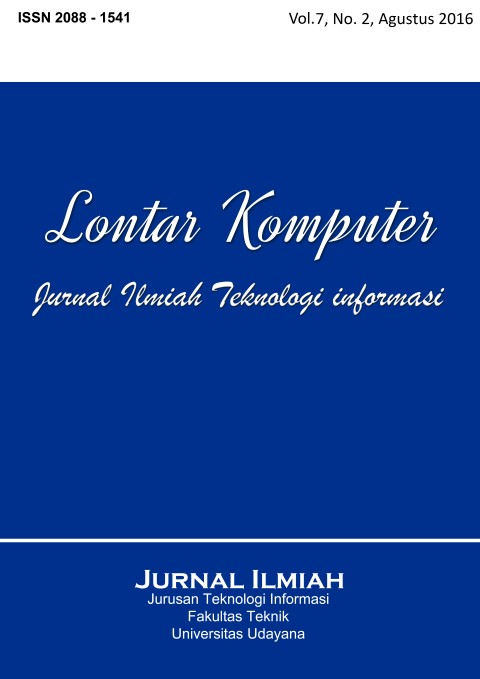Pengujian Dan Analisa Anti Komputer Forensik Menggunakan Shred Tool
Abstract
Computer forensics and anti computer forensics are two opposing fields. Computer forensics is done by a computer forensics expert in order to obtain accurate data and evidence of cyber crime cases for investigation, while the anti-computer forensics conducted by the attacker to remove traces at once difficult computer forensics expert in performing its duties. For the attacker, the selection of anti-computer forensics tool that default on the target machine, more effective and faster than installing it first on the victim machine. For this reason the author chose shred as anti computer forensics applications on GNU / Linux machine. If anti forensic work, forensic experts would be difficult to perform computer forensics to data as evidence of cyber crime. This paper describes the anti-forensics performed by the attacker to remote machines GNU / Linux for cyber crime cases in a computer network. Anti forensic performed using shred the syslog file to remove traces of the crime at the same time make it difficult for the forensic process by computer forensics expert. Tests performed on three pieces of computer-based GNU / Linux on System Signals Lab intranet ITB. Each act as the target machine (server), firewall machine, and the machine attacker. Doing the anti computer forensics and computer forensics at the server machine. The test results are recorded and analyzed in order to then be deduced.
Downloads
References
[2] M. Perklin, “Anti Forensic And Anti Anti Forensic,” 2011.
[3] S. Garfinkel, “Anti-Forensics : Techniques, Detection and Countermeasures,” in 2nd International Conference on i-Warfare and Security, 2012.
[4] I. Sporea, “On the Availability of Anti-Forensic Tools for Smartphones,” International Journal of Security (IJS), vol. 6, no. 4, pp. 58-64, 2012.
[5] Pajek, P., “Computer Anti Forensics Methods And Their Impact On Computer Forensic Investigation,” University of East London, United Kingdom, 2009.
[6] J. Mrshl, “Anti Forensic Seek And Destroy,” Echo Community, 2010.
[7] C. S. J. Peron and M. Legary, “Digital Anti-Forensics : Emerging Trends in Data Transformation Techniques,” Seccuris Labs, 2011.
[8] J. Stuttgen, Anti Forensic Resilient Memory Acquisition. Elsevier Digital, 2013.
[9] C. Armstrong, “Modelling Forensic Evidence System Using Design Science,” Curtin University of Technology Bentley, WA, Australia., 2010.
[10] G. Cairns, “Systematic Literature Review Of The Evidence For Effective National Immunisation Schedule Promotional Communications,” ECDC Stock., 2012.
[11] B. Nguyen, “Linux Filesystem Hierarchy,” 2011.
[12] A. Mathur, M. Cao, S. Bhattacarrya, A. Dilger, A. Tomas, and L. Vivier, “The New Ext4 Filesystem : Current Status and Future Plan,” 2011.
[13 ]CERT, “Computer Forensics,” USA, 2011.
[14] Pseudoanonymous, “Network Hack Philosopy,” Kecoak Elektronik, 2010.
[15] J. Y. Jianxin, “Denial Of Service : Another Example,” 2011.
[16] S. Kapoor, “Session Hijacking : Exploiting TCP, UDP, and HTTP Sessions,” 2011.
[17] S. Ganggan, “The Review Of Man In The Middle Attack.”
Keywords
The Authors submitting a manuscript do so on the understanding that if accepted for publication, the copyright of the article shall be assigned to Jurnal Lontar Komputer as the publisher of the journal. Copyright encompasses exclusive rights to reproduce and deliver the article in all forms and media, as well as translations. The reproduction of any part of this journal (printed or online) will be allowed only with written permission from Jurnal Lontar Komputer. The Editorial Board of Jurnal Lontar Komputer makes every effort to ensure that no wrong or misleading data, opinions, or statements be published in the journal.
 This work is licensed under a Creative Commons Attribution 4.0 International License.
This work is licensed under a Creative Commons Attribution 4.0 International License.























